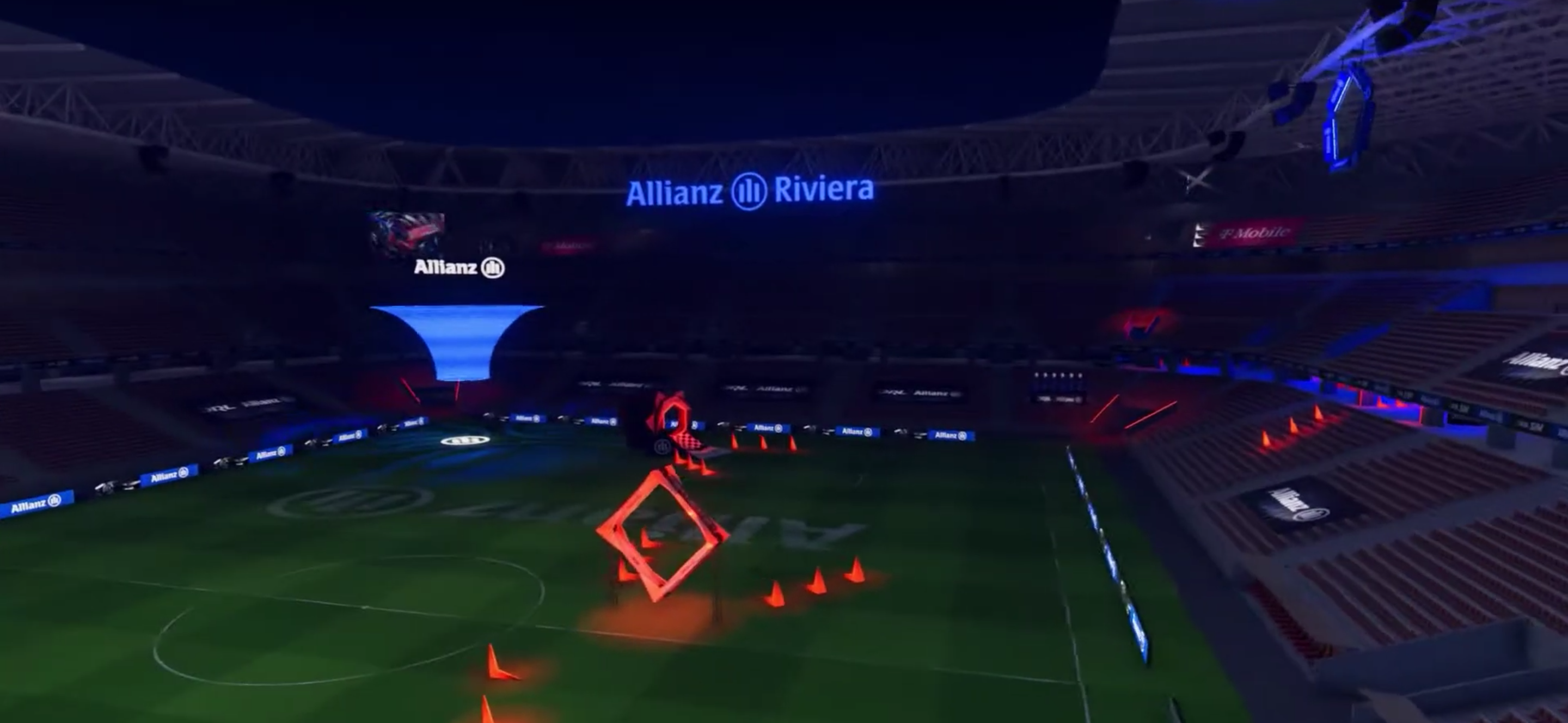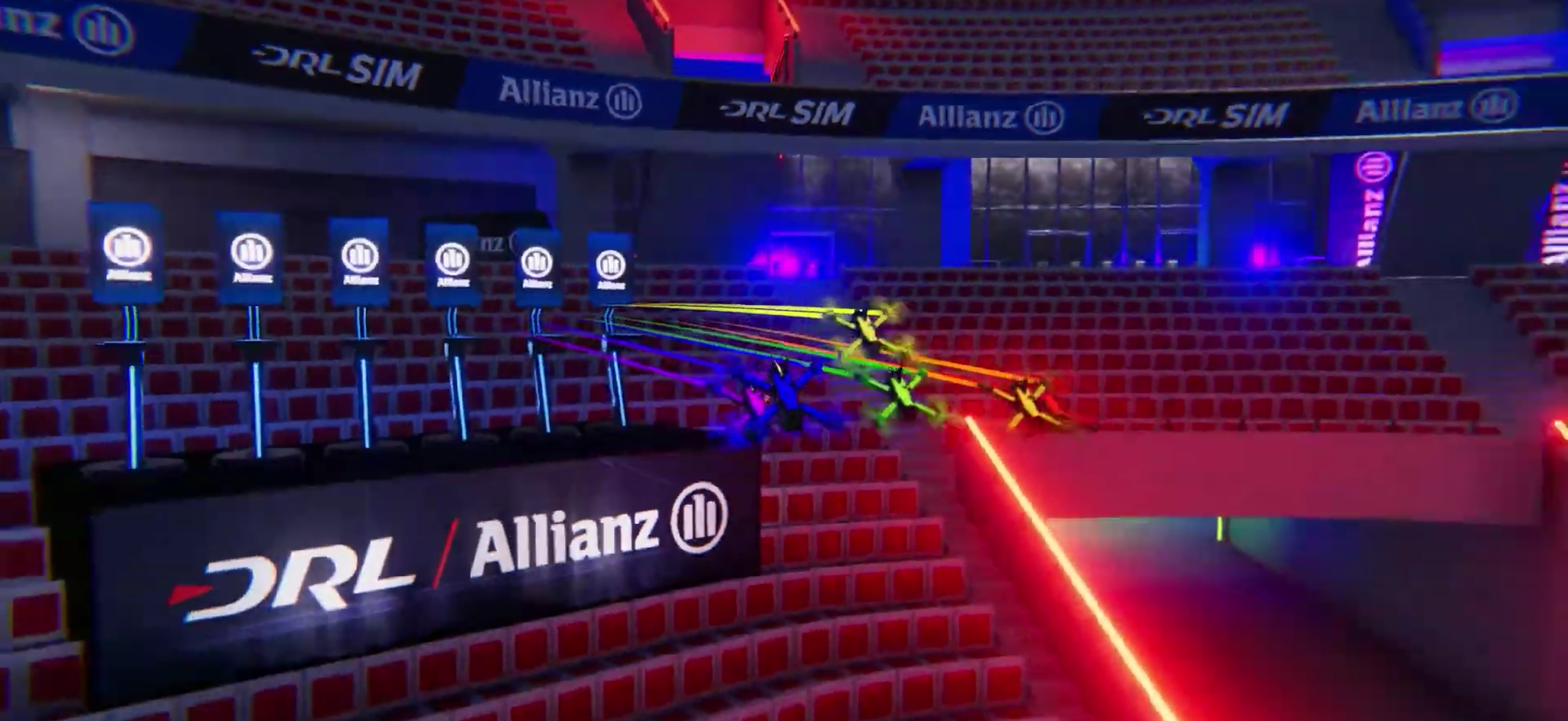Pivoting to Virtual Races, Drone Racing League Creates End-to-End Cloud Production
Sports betting, 5G are in the league’s post-pandemic plans
Story Highlights
The pandemic has forced sports leagues to dramatically change the way they conduct events, but perhaps no organization has undergone as dramatic a transformation as the Drone Racing League. When the pandemic hit, DRL was able to rapidly shift from in-person races using physical drones to virtual races that take place at simulated courses in the DRL Simulator.
To produce live broadcasts featuring a dozen pilots and nearly 40 crew members located across the globe, DRL was able to develop a fully cloud-based production workflow that continues to evolve as its 2020 DRL Allianz World Championship season comes to an end on Saturday, Jan. 30 at 4:30pm ET on NBC, Twitter and Facebook.
“It has definitely been a big transition for DRL, moving to cloud-based fully virtual racing,” says DRL COO Ashley Ellefson. “As part of that transition to virtual races, we created a totally new broadcast-production workflow, and we have moved very heavily into cloud-based technology. We’ve evolved a lot since we started with this. Speed is part of DRL DNA, so we like to do things really fast.”
The Transition: From In-Person and Onsite to Virtual and in the Cloud
Founded in 2015, the DRL is the world’s premier professional drone-racing property and, prior to the pandemic, hosted “in real life” (IRL) events all over the world, from London to Singapore to the U.S. Prior to 2020, each DRL season consisted of 12 drone pilots flying standardized racing drones (custom-built at DRL’s NYC offices).
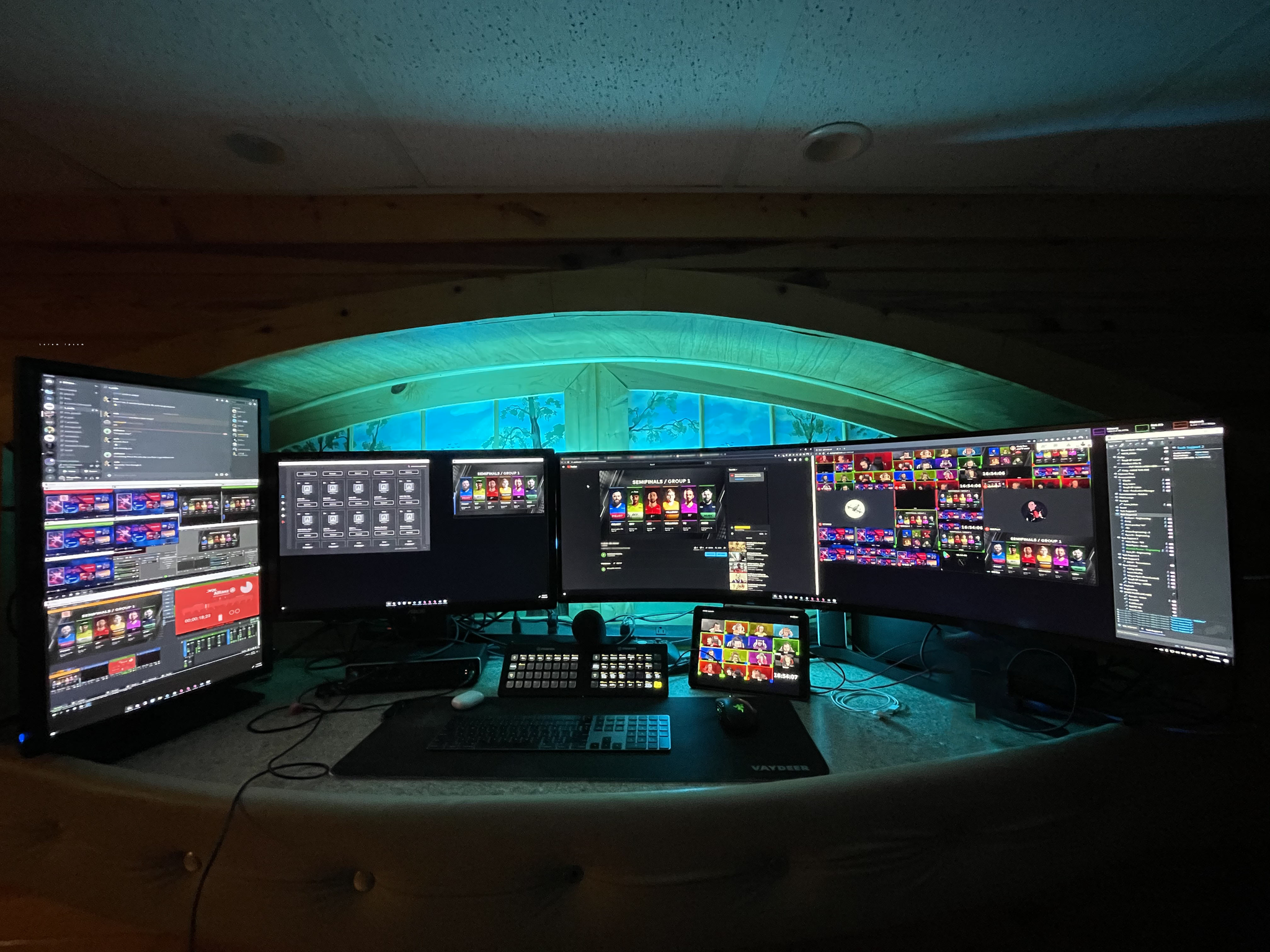 However, when the pandemic struck in March 2020, these IRL events came to a halt, and the league was faced with changing its plans for the 2020 season. DRL moved fast, leveraging its proprietary DRL Simulator and enlisting the same drone pilots who compete in IRL events (using the same controller and skills) to create a standalone SIM-based series called the 2020 FanDuel DRL SIM Racing Cup, which aired on NBCSN beginning in May.
However, when the pandemic struck in March 2020, these IRL events came to a halt, and the league was faced with changing its plans for the 2020 season. DRL moved fast, leveraging its proprietary DRL Simulator and enlisting the same drone pilots who compete in IRL events (using the same controller and skills) to create a standalone SIM-based series called the 2020 FanDuel DRL SIM Racing Cup, which aired on NBCSN beginning in May.
“Those events were postproduced, not live,” says Ellefson. “That was our first foray into solving the problem of being physically unable to get our crew and our pilots to the same location. We needed to come up with a way for them to both compete and operate remotely. And that is what propelled us to the cloud-based live-production path that we are now in the midst of.”
After initially exploring the potential of splitting the 2020-21 season into half IRL racing and half virtual racing, the league decided to go fully virtual and kicked off the campaign in October. Adding further complexity was DRL’s desire to integrate live betting into its operations (DRL inked a betting deal with DraftKings this month).
“We had about two months to take the version 1.0 system that we had already been using and ramp that up,” says Ellefson, “not only so that we could do live events but also so that it was robust enough that we could integrate sports betting into our series as well.”
The 2020-21 season, which consists of 16 races, began on Oct. 21 with preproduced races on NBCSN, Twitter, and Facebook Watch, but DRL was able to transition to live races less than a month later.
“We got the ask on Oct. 2,” says DRL Production Manager Vada Bennett. “That’s when we started our first instance of virtual machines, and then we went live for the first time on Nov. 19. We’ve been running all live with version 2.0 of our production environment ever since.
Cloud-Based Workflow: Creating a Production Ecosystem From Scratch
Personnel for each DRL event consists of 37 crew members and 12 pilots — all remote, spanning eight countries across three continents. To support this multisite operation, DRL developed a production model built around 10 vMix virtual video switchers running in the Amazon EC2 cloud.
“We’re running 10 instances of vMix to allow us to load-balance what we have, because our show is so graphically intense,” says Bennett. “At any point, we are probably going to have 10 video sources on-screen between the pilot frames, background video, and the graphics. We’ve got those 10 vMix instances as well as a couple other VMs [virtual machines] that are doing things like a file store and transmission.”
DRL also has a VM hosting a TeamSpeak comms server, which serves as communication platform for all the crew and the pilots. The TeamSpeak server is broken into about 15 channels, and a comms-specific A1 manages the different channels based on what is going on within the show format. Commentators and crew alike communicate on TeamSpeak to ensure low latency and the highest possible customization for each individual. The production team also uses discord for chat functionality during its live shows, as well as a backup comms channel.
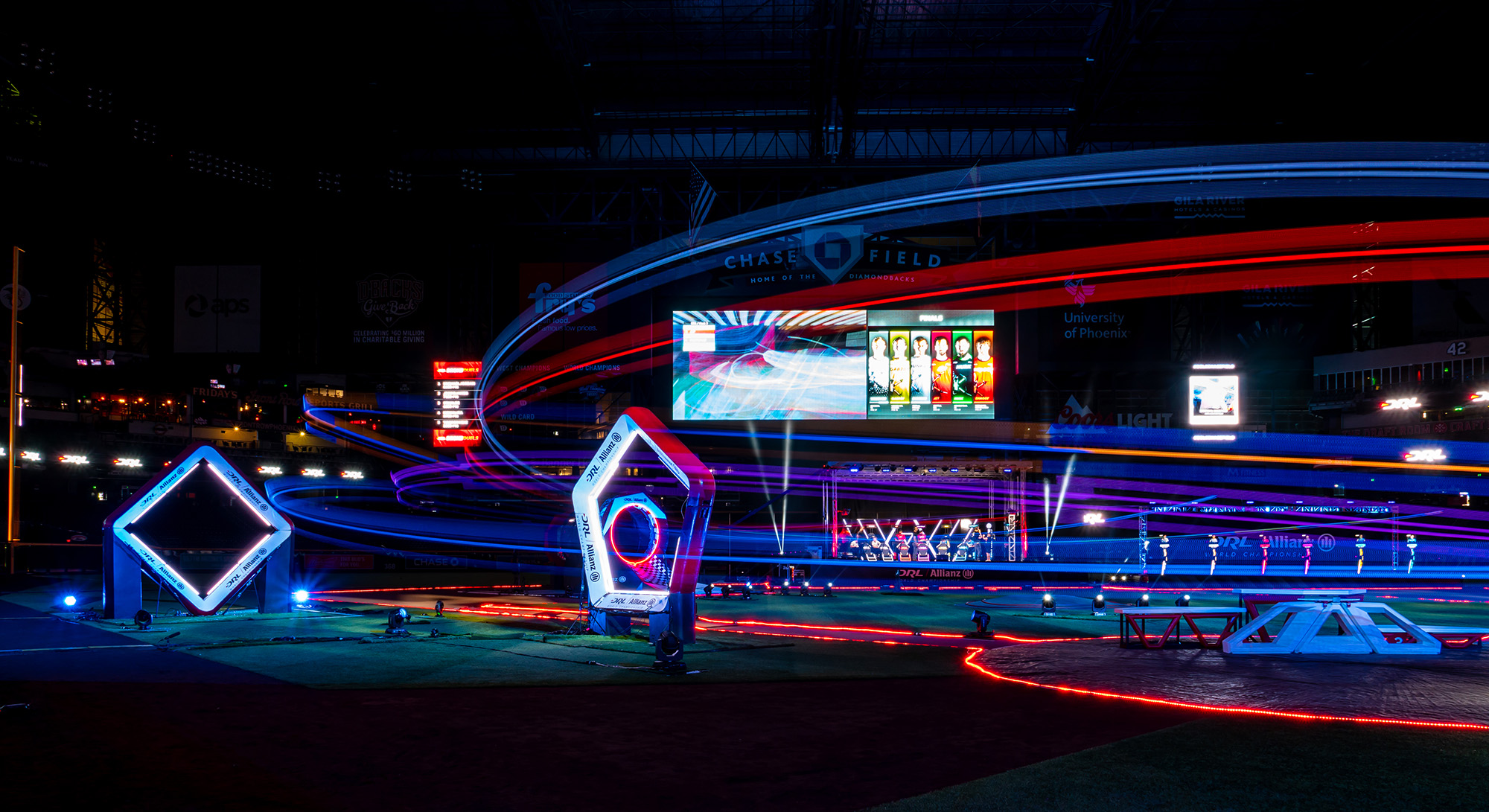
2019 DRL Allianz World Championship Season race was held at Chase Field when IRL events were still taking place.
“We ended up going the TeamSpeak route because of the customization, which allowed you to actually move users through the different channels based on the instance of the show,” says Bennett. “We also ended up using TeamSpeak because it allows for the lowest latency possible.”
All “hands-on-keys” crew members connect to the production environment using Elgato Stream Decks along with remote-desktop software to execute the show and triggers based on calls from the director and producer. The DRL production team distributes about 10 custom multiviews that go out to the crew based on their respective needs. Although the producer and director are not supplied with Stream Decks, they are able to view the entire production environment via these multiview feeds.
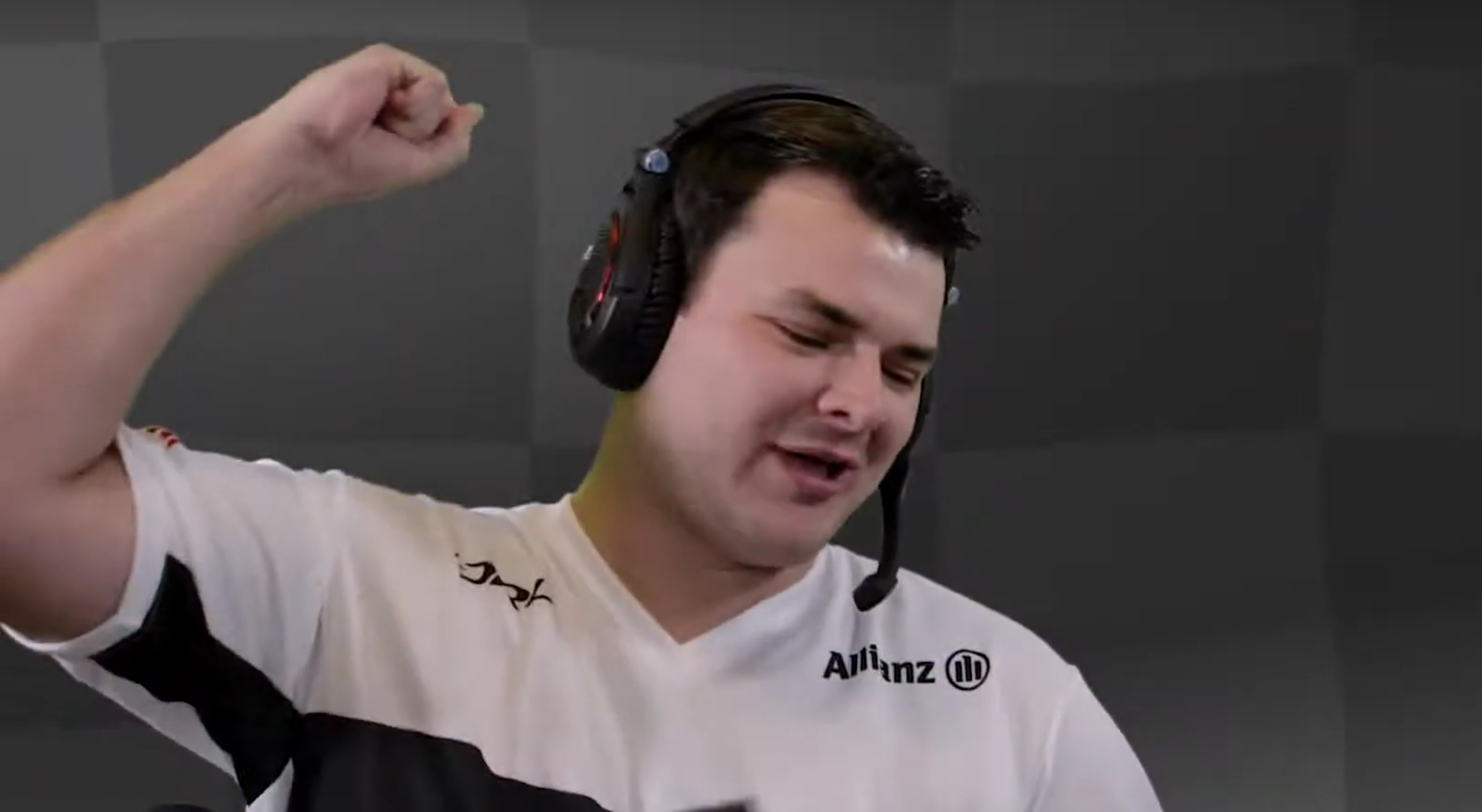
All pilots and crew are given custom-designed production kits as part of the DRL cloud-based production model.
“Redundancy was a big focus for us,” says Bennett, “because this was a betting product and we had so many integrity qualifications. We had to make sure we had 100% uptime on the gameplay as well as on pilot and commentator video and audio capture.”
With that in mind, DRL distributed two identical custom-designed systems to every crew member and pilot with a custom laptop, headset, camera, green screen, and lighting kit. DRL transmits dual SRT streams out of those pilot computers with auto-failover ISP from the pilot’s home (essentially, dual internet as well). Each feed is sent to an Ubuntu-based NDI router and is merged into an auto-failover unified NDI source routed through the DRL production environment with multiple submixes for the graphics-heavy show.
“During one of our stress-test rehearsals,” says Bennett, “I would go around and secretly kill processes to test failovers. I even killed a pilot’s transmission feed at one point and was waiting for chaos to ensue, but the crew and the pilots didn’t even notice the outage because it just immediately failed over. We have focused a lot on building redundancy into the overall live-production system because of the betting piece and also because we knew we were going to be on live linear television.”
Betting, 5G, IRL Events: DRL Continues To Evolve and Looks to the Future
From its founding in 2015, DRL has had sports betting on its roadmap. And now that the wave of legalized sports betting has begun, DRL is looking to take the next step.
“Betting has been something that we wanted to do since day one of DRL,” says Ellefson. “Our sport is just made for betting. We often compare it to horse racing. But we always knew we couldn’t do betting without being live. That has always been our biggest barrier to entry in terms of the betting piece. But this was our year to do it.”
According to Ellefson, DRL research has indicated that its fans are 90% more likely than other global sports fans to participate in betting. With DraftKings enlisted as Official Sports Betting Partner, DRL races became the first aerial sports event on which fans can wager. Bookmakers set the live game odds, using data like heats times, heat wins, and pole position that DRL provide through an API alongside the live video fee.
“It’s going really well,” reports Ellefson. “We need to ensure that betting is integrated into our show and that our commentators can speak about it, that our pilots are educated about the integrity piece of the betting, and that we’re giving viewers information about what’s happening with odds. We are now integrating live odds with in-game bets into our show, and we will talk about how the odds shift.”
In addition to betting, DRL has hopped aboard another popular bandwagon: 5G. In December, the league announced a deal with T-Mobile to advance 5G-powered drone technology. The two companies are looking to create the first integrated 5G racing drones, with the aim of authentically building them into the sport.
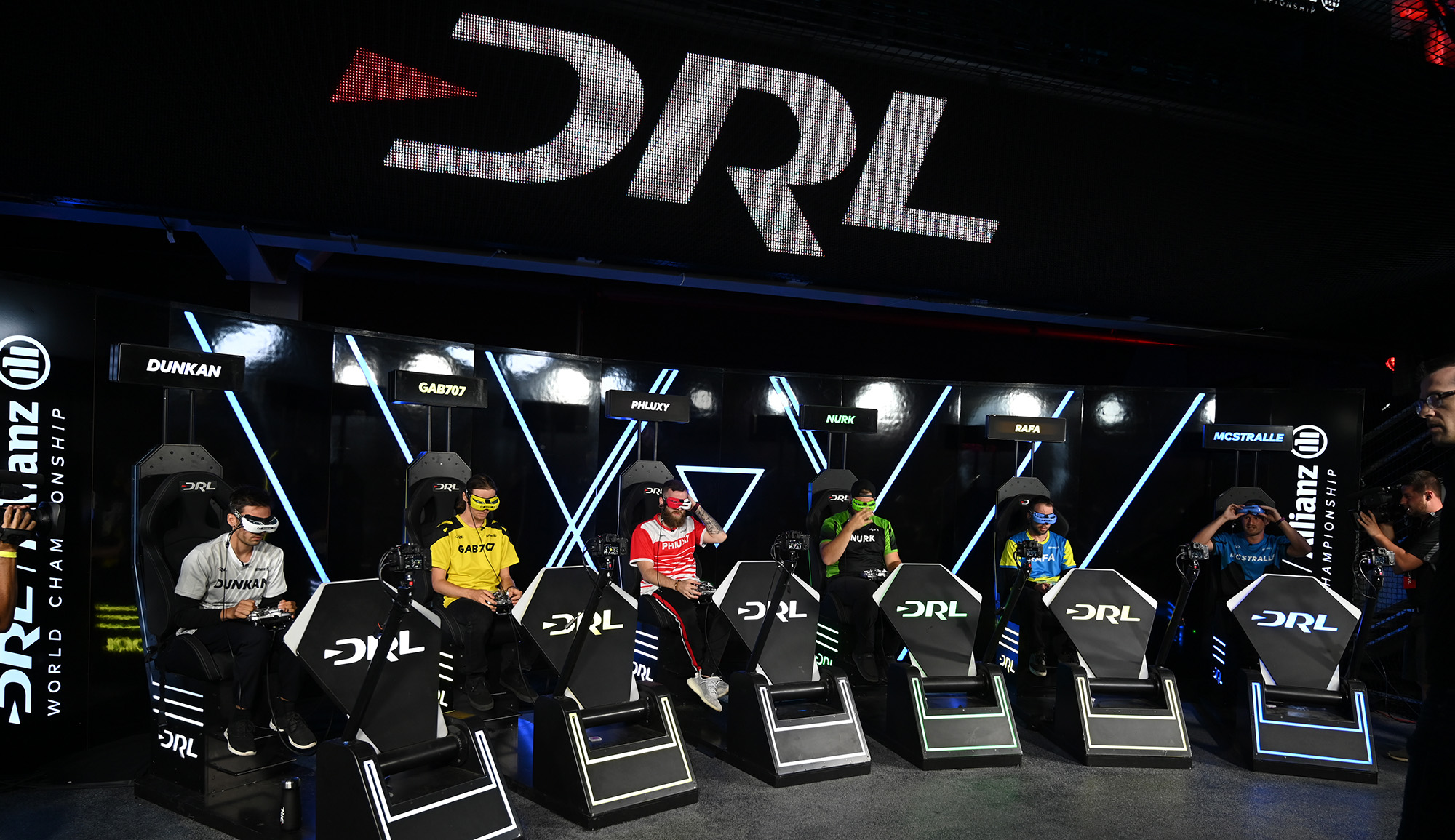
Prior to DRL’s pandemic-related shift to remote events, pilots compete in 2019 DRL Allianz World Championship Season drone race at Allianz Field.
“We will be able to stream video to fans in a live environment as well as eventually live on a 5G network,” says Ellefson. “that is very groundbreaking and something we’re excited to debut later this year.”
Although Ellefson says the league is focused on returning to IRL events when possible, she also says simulator events will continue to play a major role in DRL even after the pandemic. The organization’s in-house team of developers and graphic artists continues to upgrade its DRL simulator on a regular basis, and she believes the advances made in cloud-based production will help DRL when in-person events return.
“We will continue to incorporate SIM racing,” she adds, “and I think, this past year, we have realized everything it can add to the league and to the ecosystem that we’re building from a sport perspective. You will continue to see SIM racing.
“From a production standpoint,” she continues, “our next big challenge is how to take what we’ve learned with the cloud-based production workflow and systems and leverage that for onsite. We are aiming to get back to IRL racing as soon as the world allows. And there is a lot that we can take from what we’re currently doing to enhance our production when we get back to being onsite.”

